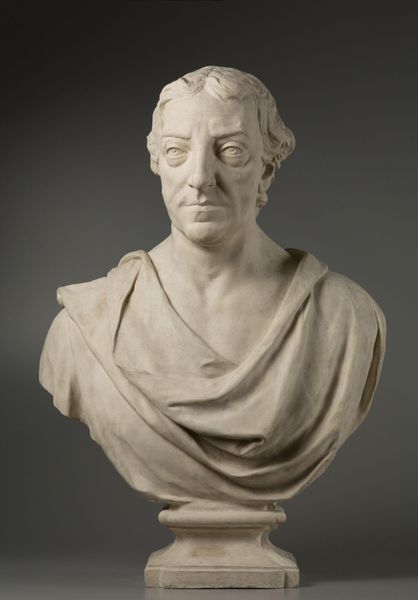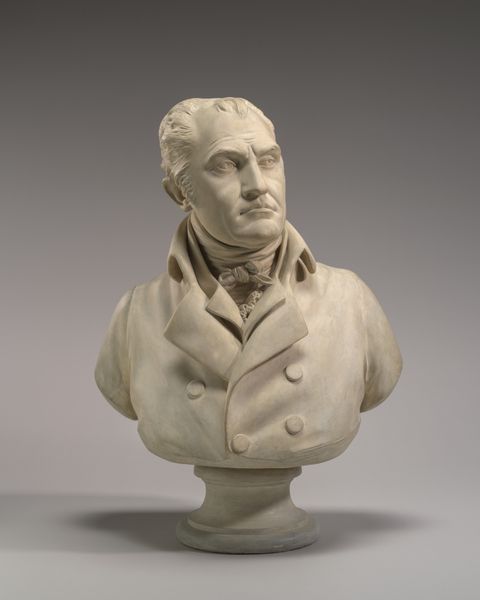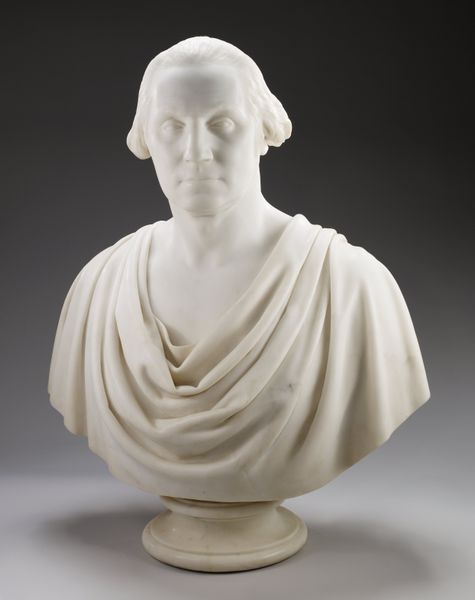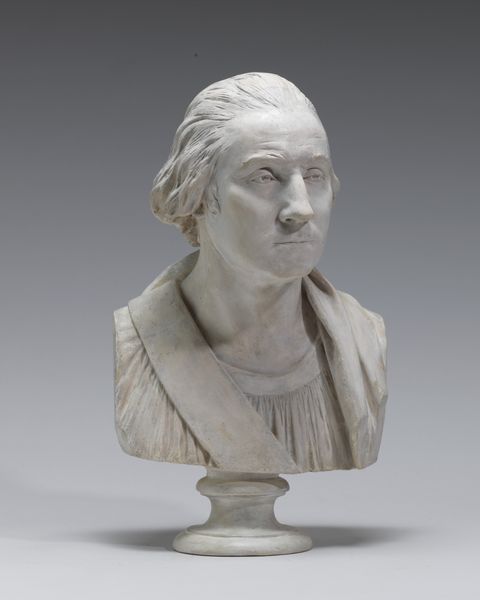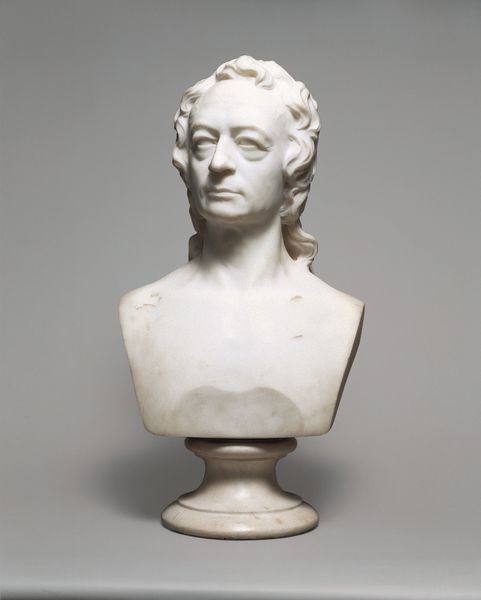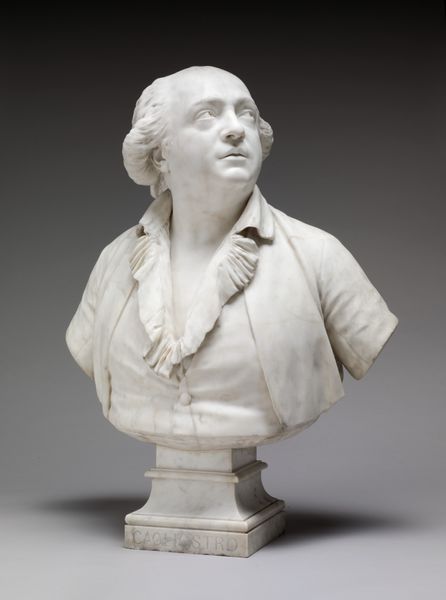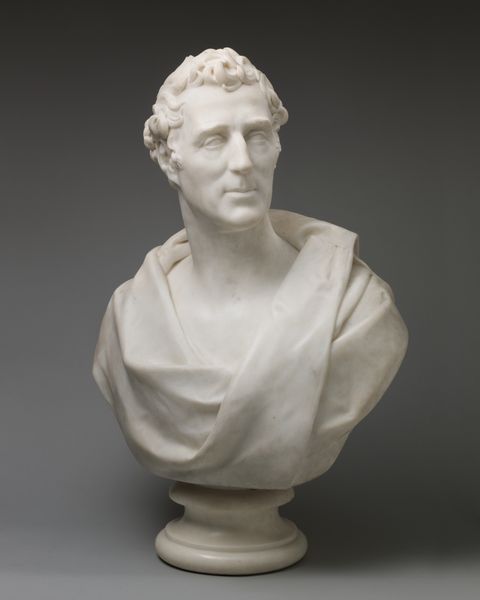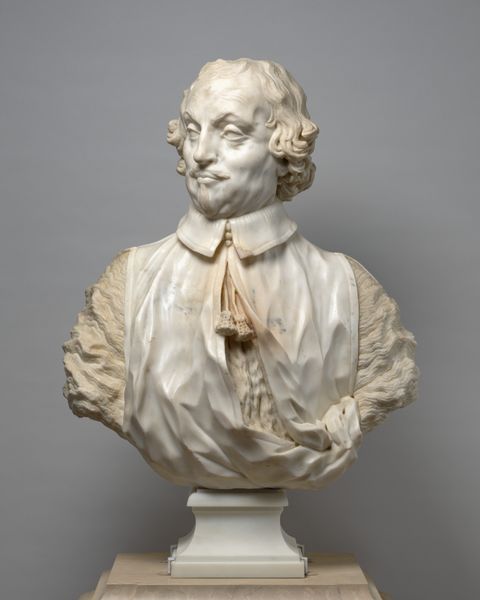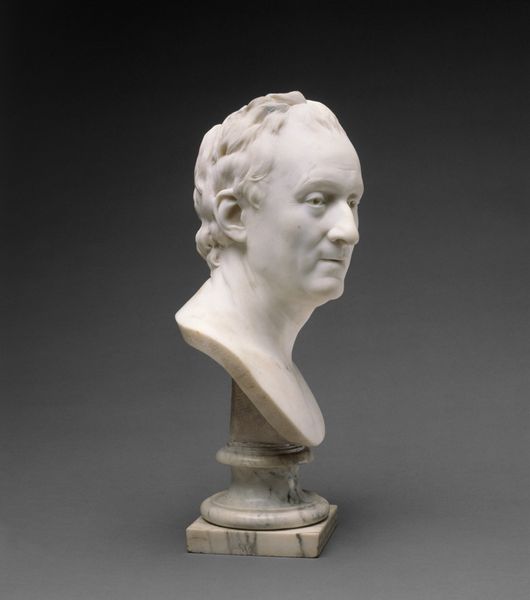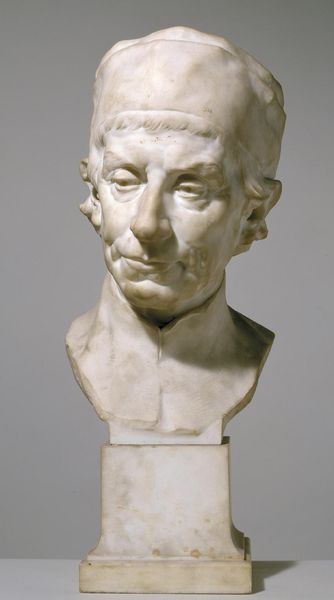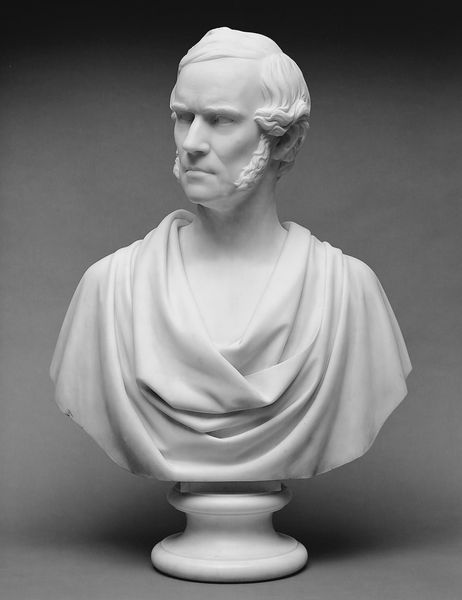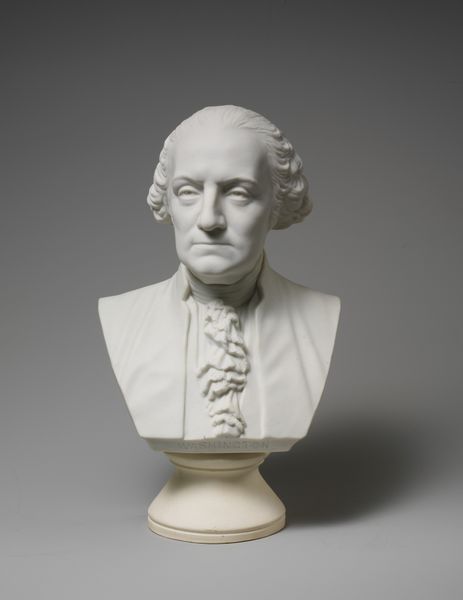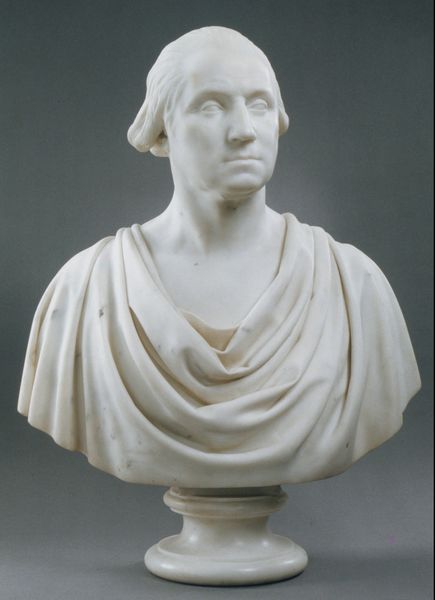
Dimensions: object: 724 x 508 x 279 mm
Copyright: CC-BY-NC-ND 4.0 DEED, Photo: Tate
Editor: Here we have a marble bust of George Canning by Edward Hodges Baily. The smooth, cool surface and the draped fabric give it a sense of formality, but there's also a vulnerability in his expression. What can you tell me about its place in history? Curator: Well, portrait busts like this one weren't just about capturing a likeness. They were powerful tools for constructing and projecting social status. Canning was a prominent politician; how does this idealized image reinforce or challenge public perceptions of him? Editor: I hadn't considered that. So, the artist wasn't just sculpting a man, but also crafting a public image. Curator: Exactly! Think about where this bust might have been displayed – a grand hall, a library – spaces designed to impress. It's a statement about power and legacy, isn't it? Editor: That's fascinating. I'll definitely look at portraiture differently now. Curator: Me too. Considering how art shapes our understanding of history is so important.
Comments
tate 8 months ago
⋮
http://www.tate.org.uk/art/artworks/baily-george-canning-after-joseph-nollekens-n02247
Join the conversation
Join millions of artists and users on Artera today and experience the ultimate creative platform.
tate 8 months ago
⋮
This bust of the statesman and orator George Canning (1770–1827) was one of a group of national heroes commissioned by Robert Vernon. Baily copied the bust of Canning (who died two years before this commission) from an 1810 bust by Joseph Nollekens. Canning was Foreign Secretary from 1807 to 1809, and 1822 to 1827, and Prime Minister shortly before his death in 1827. Busts such as this were intended to record the likeness of a subject, while the classical reference and durable material indicated the timeless nature of their achievements. Gallery label, February 2016

